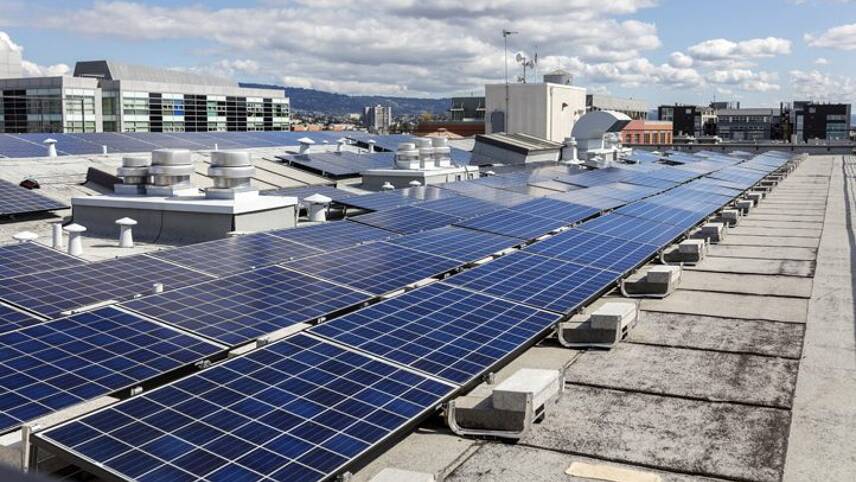Register for free and continue reading
Join our growing army of changemakers and get unlimited access to our premium content

It is a development that will be vital in the transition to a low-carbon economy as two-thirds of the world’s population will live in urban areas by 2050, and cities are already responsible for over 70% of the world’s energy related carbon emissions.
That is why it is encouraging news that over 100 cities now report getting at least 70% of their electricity from renewable sources such as hydro, geothermal, solar and wind, according to new research released by CDP last month. From Addis Ababa in Ethiopia to Seattle in the US and Auckland in New Zealand, some 184 cities now have solar energy in their electricity mix, while 189 report that they source wind energy.
With renewables predicted to be consistently more cost effective than fossil fuels globally by 2020, the rate at which cities shift to green energy is likely to accelerate further. Last year, unsubsidised renewables were already the cheapest source of electricity in 30 countries, according to the World Economic Forum.
Burlington shows the way
One of the cities leading the fight against climate change in the US is Burlington, Vermont. One of more than 40 cities named by CDP as being powered 100% by renewable electricity.
Burlington’s first step in reinventing itself came in 1978 when it replaced an ageing coal plant with a 50-MW generating station. The city then tapped into wind and solar power, building a 10-MW wind farm and installing rooftop solar PVs on high schools, the airport and the electric department. The final phase in the city’s restructuring came in 2014 when citizens voted to approve a US$12 million bond in 2014 for the city’s energy department to purchase the 7.4-MW Winooski Hydroelectric Plant.
Not only has Burlington’s transition been good for the environment, it had significant economic benefits for residents too. Burlington has not raised electricity rates in eight years.
Burlington was the first city in the US to shift to 100% renewables, and now 58 cities and towns across the US have reported to CDP that they too will do this, including major cities like Atlanta and San Diego.
UK cities stepping up to the challenge
There’s a notable omission from the list of countries that already have cities that source all of their electricity from renewables – the UK. This has not gone unnoticed by British municipal leaders and last month the UK100 network announced that more than 80 UK local authorities have committed to shift to 100% clean energy by 2050.
The combined commitments have the potential to reduce the UK’s carbon footprint by an estimated 22% and make a significant contribution to legal obligations under the Climate Change Act which, requires Britain to cut its CO2 emissions by 80% from 1990 levels within the next 32 years.
Big business is on board
For cities to fully transition to renewables, the business community needs to be on board. Reassuringly, not only has the private sector shown compliance with shifting to green energy, in many ways it has been driving the transition as well.
Global business leaders have stepped up to the plate and more than 100 major corporations such as Unilever, Google and Tata Motors have committed to 100% renewable electricity.
With the international business community and national leaders taking steps to win the fight against climate change, CDP’s new data shows that municipal leaders deserve as much recognition in catalysing the shift to renewable energy.
Here at CDP, we urge all cities, states and regions, and companies to share their knowledge, tell us about their strategies and targets and take action to shift to renewable energy. The time to act is now.
CDP at edie Live
CDP’s global director of corporations and supply chains Dexter Galvin will be speaking at the resource efficiency theatre on day two of edie Live. The session will explore how you can effectively engage with suppliers to decouple resource use from value creation, and source key commodities more sustainably.
Running between 22 – 23 May 2018, edie Live plans to show delegates how they can achieve their Mission Possible. Through the lens of energy, resources, the built environment, mobility and business leadership an array of expert speakers will be on hand to inspire delegates to achieve a sustainable future. For more information click here.
Kyra Appleby is Director of Cities at global environmental impact non-profit CDP



Please login or Register to leave a comment.